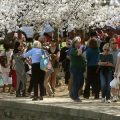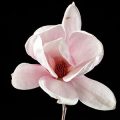Significance of Sakura: Cherry Blossom Traditions in Japan
Erina Takeda explains why the cherry blossom is so special to the people of Japan.
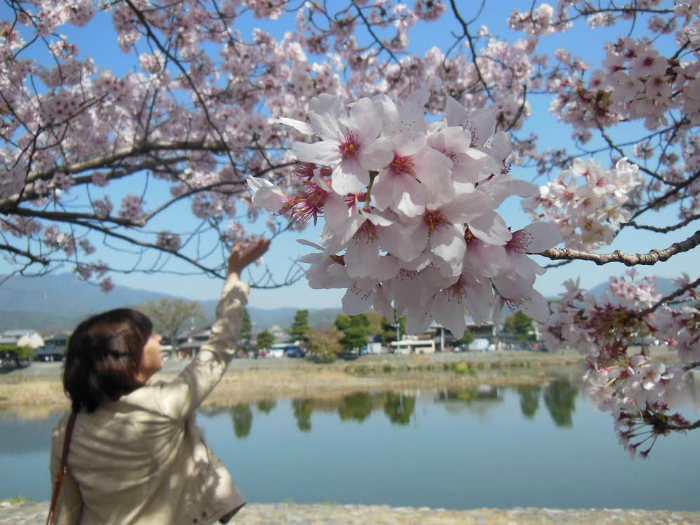
Spring has arrived! The cherry trees are starting to bloom again around the National Mall and Potomac Park in Washington, D.C. In Japan, cherry blossoms are called sakura, a special flower for the people and the country.
Cherry blossoms are a symbolic flower of the spring, a time of renewal, and the fleeting nature of life. Their life is very short. After their beauty peaks around two weeks, the blossoms start to fall.
During this season in Japan, people like to have cherry blossom parties with colleagues, friends, and family. A cherry blossom makes people merry. They enjoy eating, drinking, and barbecuing underneath the cherry blossoms. We call this custom hanami. Hanami literally means “watching blossoms,” and the tradition can be traced back at least a thousand years. We bring cooked meals, alcohol, snacks, and sweets, like a potluck party. Schools and offices hold welcome parties during hanami, a chance for people to bond and meet new friends.
Even at night, viewing spots are crowded with people enjoying the blossoms in a beautiful, romantic atmosphere. Couples go at night to enjoy the special mood created by cherry blossoms. Hanami at night is called yozakura.
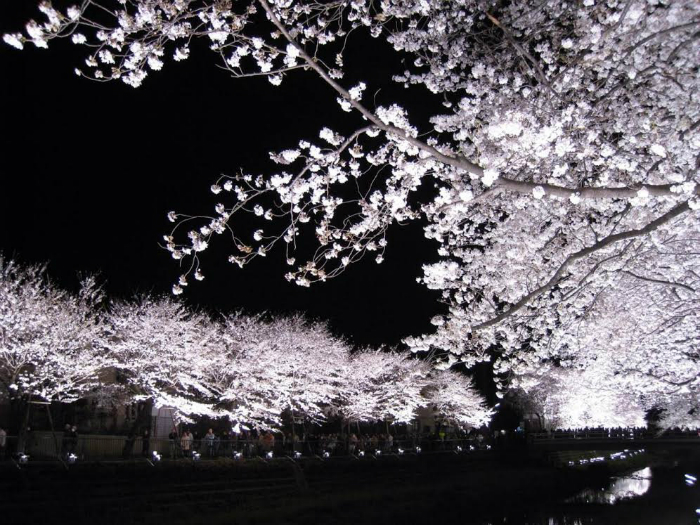
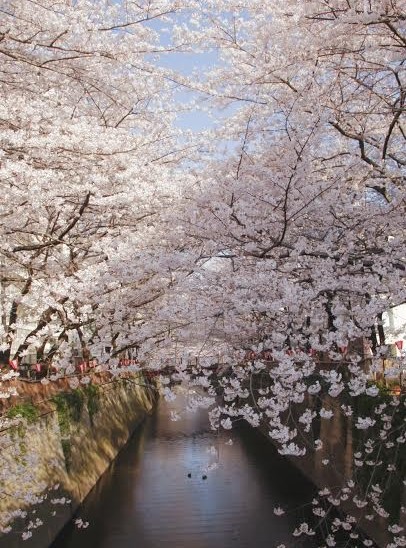
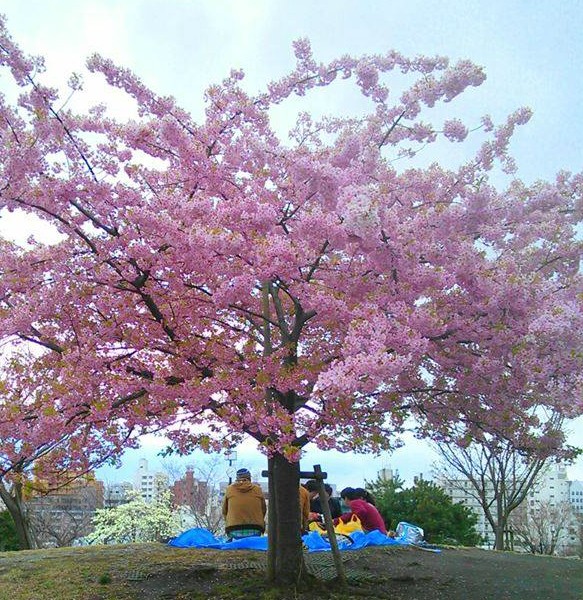
While American schools begin in the fall, the Japanese fiscal and school year begins in April, the season of sakura. We feel like the fully bloomed cherry blossoms are celebrating and welcoming our brand-new start. Many schools and companies have cherry trees outside of them. This is why Japanese people have special feelings for the cherry blossoms.
I have lovely memories from when I was young, doing hanami with my parents, brother, and sister. My mom packed a special lunch box, hanami bento, full of our favorite foods. My father was in charge of securing a good place for us at the famous park by placing a blanket under the cherry trees in the early morning.
Now I like to go to hanami with a few of my close friends just to enjoy the cherry blossoms, but if I go with a lot of friends or a group of colleagues, it mostly means having a party with lots of eating and drinking.
Cherry trees have spread throughout the world to other Asian country, the United States, Canada, Brazil, Germany, Turkey, Spain British, Australia, and beyond. We’re lucky to have thousands of cherry trees around the Tidal Basin in Washington, D.C.
In 1912, 3,020 trees were sent from Yokohama to Washington, D.C., as a gift from the people of Japan to the people of the United States. This spring the Cherry Blossom Festival celebrates the 102-year anniversary of the gift of sakura.
Now that cherry blossom season is here, you can say: “The season of sakura is coming! Want to go to hanami?”

This is the Japanese character for sakura. The 木 (ki) on the left side means tree/wood and developed from a pictogram of a tree, with the horizontal line as branches and diagonal lines as roots. Sakura is derived from saku 咲, which means to bloom, or alternately to smile/laugh. The 口 in 咲 indicates an open mouth.

花 (hana) means “flower,” and 見 (mi), means “to view.” Together, hanami literally means “to view flowers.” 見 is a combination of the characters for “eye” and “human,” evolving from a pictogram of a human figure with two legs and a large eyeball for a head.

These characters (yozakura) mean viewing cherry blossom at night. 夜 (yo) means night, and 桜 (zakura) is the same as sakura.
This article was originally published by the Smithsonian’s Center for Folklife and Cultural Heritage Festival Blog. Erina Takeda is a former intern with CFCH. She attended the Aichi Shukutoku University in Japan, studying international relations with a focus on culture and sustainability.
Posted: 30 March 2021
- Categories:

